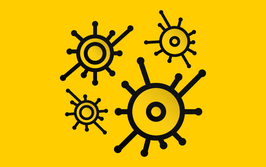Supplying Health to the Whole World
New and improved drugs are released every year to tackle global health needs – and many pharma companies have initiatives to supply those drugs to the developing world. Unfortunately, efforts are wasted without proper supply chain management. Here, we prioritize the top ten challenges.
Medical research and development continues to make progress, turning once impossible goals into achievable possibilities. Yet global health success continues to elude us, resulting in an ever-widening gap between objectives and on-the-ground realities. It’s a gap that cannot be filled by pharmaceutical R&D alone. In many cases, the technology, medicine and treatments exist to improve global health, just not in the right place at the right time. And that’s where effective supply chain management comes in.
To better understand the challenges of global health pharmaceutical delivery (GHPD) supply chains, we undertook interviews and surveys of professionals working in the field. By examining the results of our research, we were able to identify and prioritize the top ten issues in GHPD supply chains:
- Lack of coordination. The current system of health delivery is siloed, fragmented, and ultimately uncoordinated. Such fissures follow NGO/public/private designation, product types, projects, and funding entities. This complexity makes management and distribution difficult.
- Inventory management. In GHPD supply chains, this is a complex challenge, especially considering the lack of information and unique contextual challenges. More specifically, such issues involve inventory inaccuracies, quantification, uninformed push systems, inventory allocation, product availability management, and appropriate IT systems.
- Demand information. The absent and/or aggregated nature of demand information creates serious consequences in procurement and management decisions. There is rarely access to any consumption data and, in fact, most stages of in-country supply chains only know demand in terms of their received orders.
- Human resource (HR) dependency. HR limitations are increasingly recognized as a key bottleneck in developing countries. The lack of qualified personnel and appropriate training leads to high workloads and low performance while leaving key duties unattended. In fact, there are often insufficient trained staff to perform even basic supply chain duties. Logistics-specific positions are rare, instead medical personnel are often responsible for making supply chain calculations and decisions.
- Order management. Problems in order management (planning, ordering, and follow-up) are heavily linked to a lack of reliable demand information and shipment visibility, and are only exacerbated by long lead times. It is generally unknown if there is enough product in the system or at the central medical stores. Consequently, ordering and planning are based on assumptions and experience.
- Shortage avoidance. There are a few principal strategies employed to avoid and react to shortages; namely frequent ordering, frequent replenishment, large buffer stocks, and expensive emergency ordering.
- Expiration. A major source of product wastage at every stage of in-country supply chains, expiration comes with significant consequences, including financial losses, safe disposal efforts, and lack of stock elsewhere. Causes include medicine selection, forecasting, demand quantification, procurement, warehouse management, inventory management, employee training, and use. It is not uncommon to find expired medicines being used unknowingly to fulfill an order.
- Warehouse management. Many issues center on poor storage conditions, organization, procedures, capacity, and shared space management, which in turn stem from the lack of proper equipment, electricity, and training. Such poor organization can often lead to issues with capacity, inventory policy adherence, discrepancies, and control.
- Temperature control. Another major cause of wastage is temperature failure of pharmaceutical products from exposure to hot or freezing temperatures in transport and/or storage, resulting in large monetary loss and high risk to patients. Throughout the supply chain, temperature deviation most typically occurs during in-transit delays or at the lowest supply chain levels, due to inadequate oversight.
- Shipment visibility. Once a shipment leaves the manufacturer, it is increasingly difficult to track and trace in the supply chain. Shipments typically become invisible before ever reaching their final destination. Accordingly, it is often unknown if products make it to intermediate warehouses, health facilities, or final recipients. Similarly, recipients typically have no information on when an order will arrive.
Clearly, there are some major obstacles to overcome. So where should we begin? In analyzing these top ten GHPD supply chain issues, it quickly becomes clear that four issues drive the entire list: lack of coordination, insufficient demand information, shipment visibility and, most notably, development of human resources (including expertise, training, and personnel capacity). These are the issues we need to tackle first if we are to get medicines to those who need them and allow everyone to benefit from breakthroughs in pharma R&D.
Efficiency is something of an obsession for Natalie Privett, whether she is loading the dishwasher in her New York apartment or considering the delivery of health interventions in the developing world. In fact, it was her passion for doing good more effectively and efficiently that led her to pursue her Masters and PhD at Stanford University’s department of Management Science and Engineering. Now, as an Assistant Professor of Management and Policy at the Wagner Graduate School of Public Service, her research focuses on operations and supply chain management in the context of global public health, international public service, and nonprofit management.



















